Abstract
Tacrine is a cholinesterase inhibitor with activity in the central nervous system originally marketed for the reversal of competitive neuromuscular blockade. Because a marked reduction in cholinergic neurons is a hallmark of brain changes in Alzheimer disease, tacrine has been studied in two placebo-controlled clinical trials of patients with probable Alzheimer disease. Standard analysis of variance (ANOVA) and analysis of covariance (ANCOVA) have shown a difference between the tacrine group and the placebo group in terms of the cognitive component of the Alzheimer disease assessment scale at the end of the placebo-controlled phase. Due to limitations of ANOVA and ANCOVA, only a selected group of patients could be analyzed by those methods. A population pharmacodynamic model has been developed that allows the use of all observations from one or more trials to be combined. It can incorporate any sequence of active or placebo treatments and account for carryover effects of both placebo and active drug. The time courses of active or placebo treatment response and the development of tolerance to active drug or placebo can be defined. The model describes disease progression without treatment, the placebo effect, and the effect of tacrine as a function of daily dose. Placebo effect and active drug effects are modeled by effect site concentration components.
Full text
PDF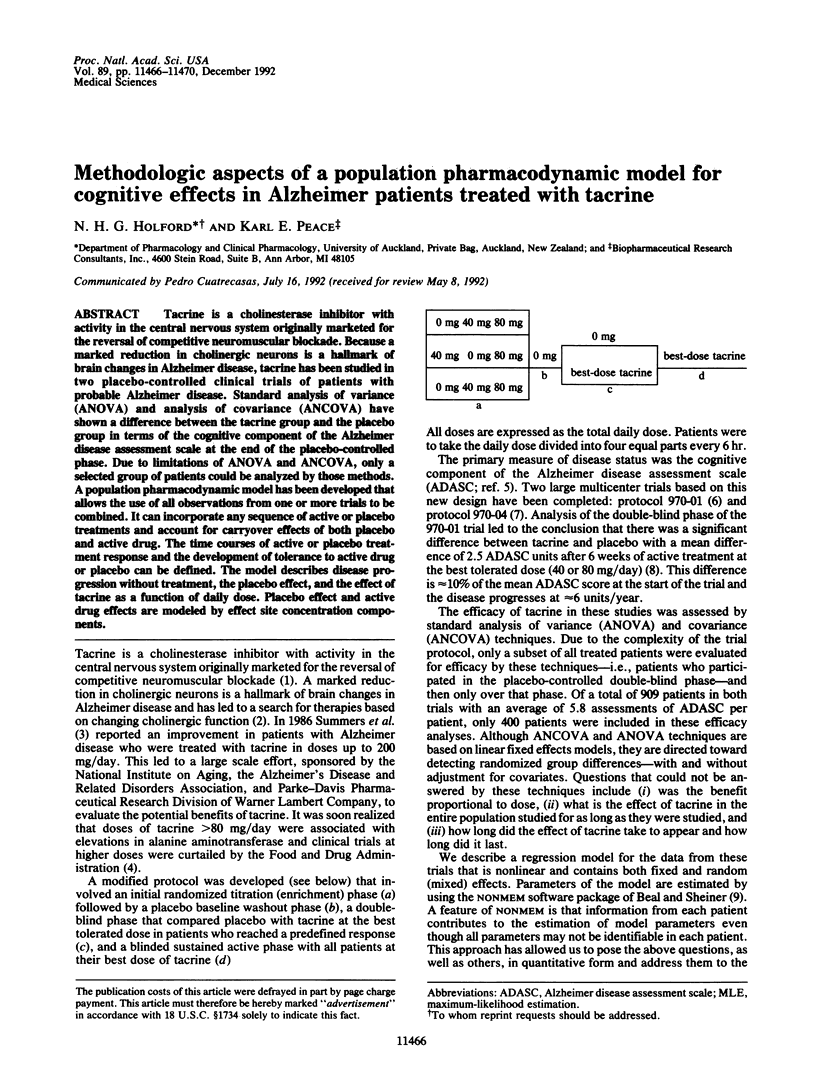
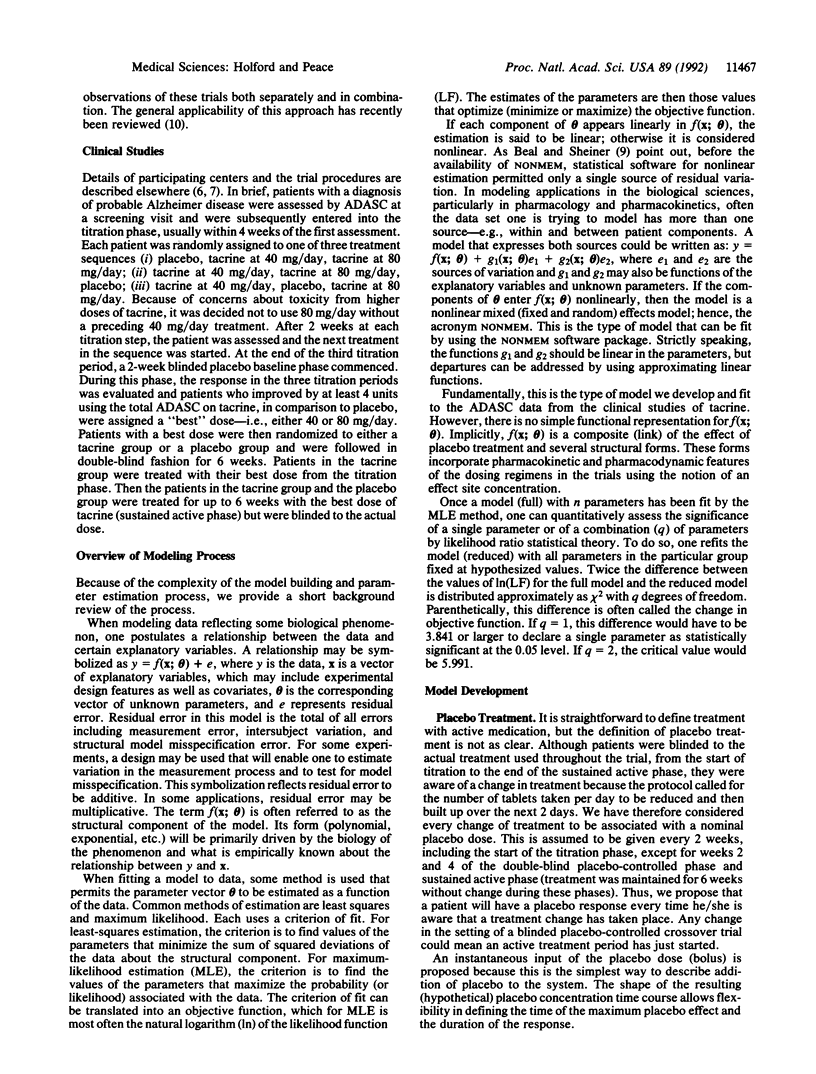
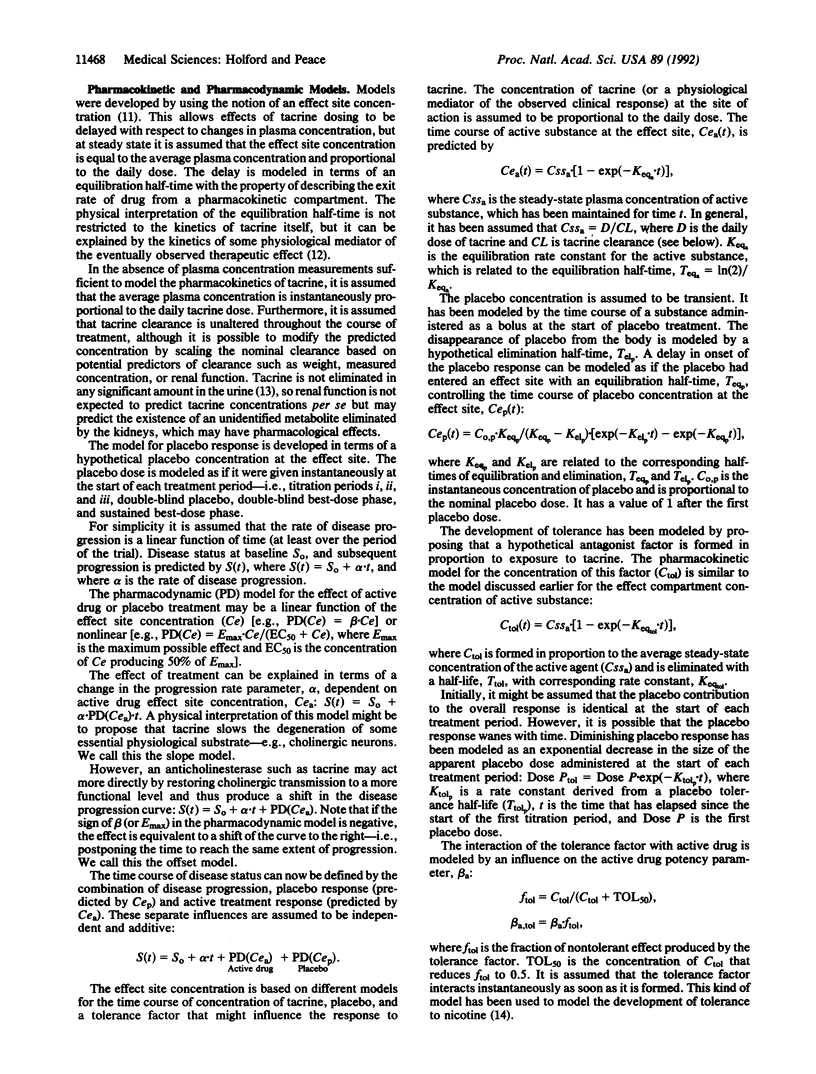
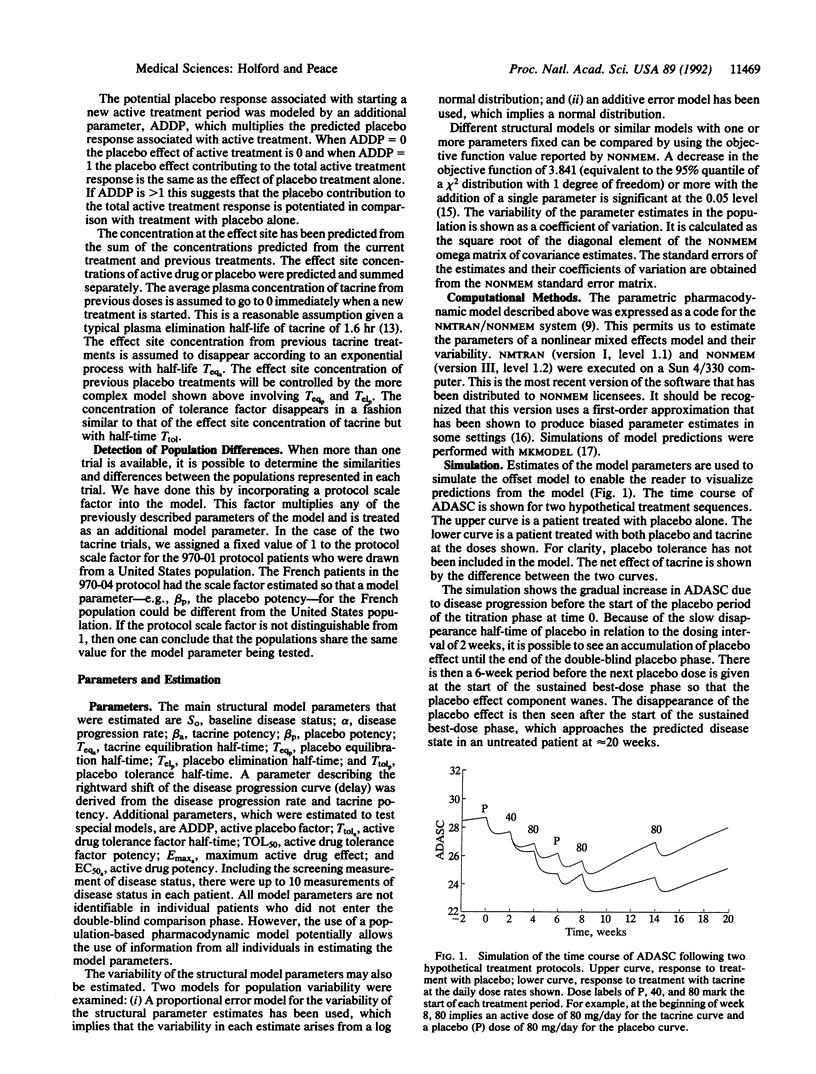
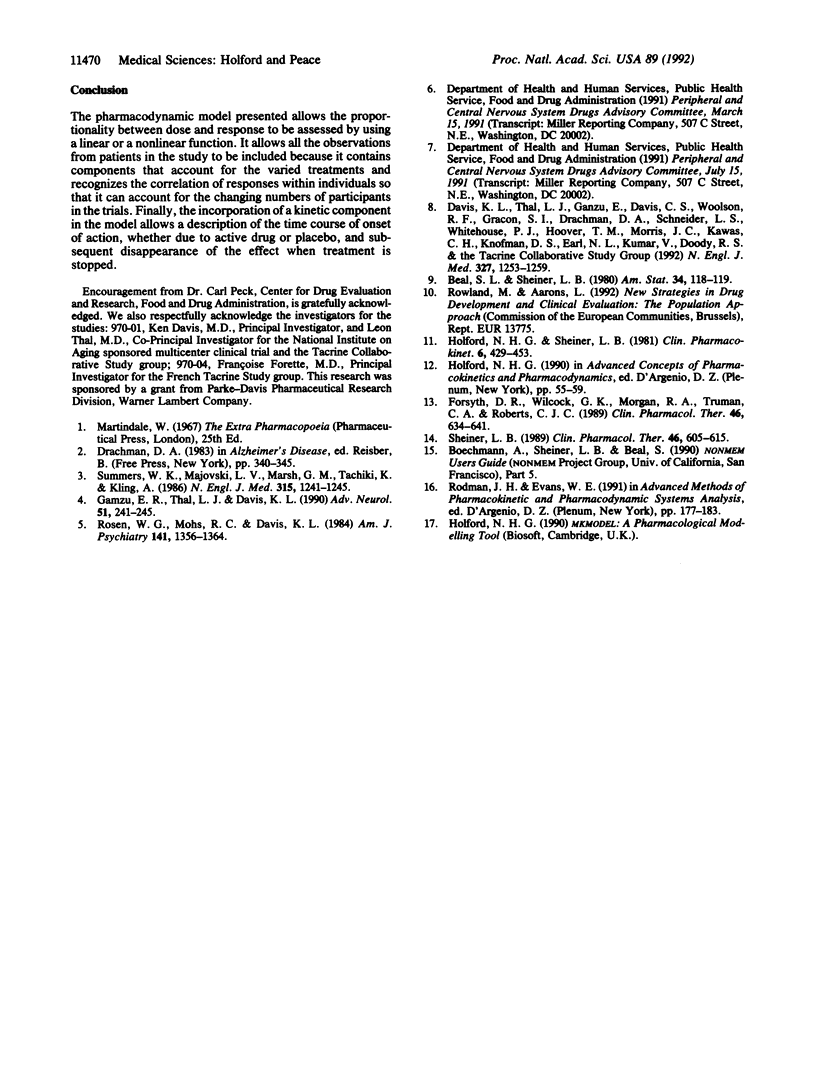
Selected References
These references are in PubMed. This may not be the complete list of references from this article.
- Davis K. L., Thal L. J., Gamzu E. R., Davis C. S., Woolson R. F., Gracon S. I., Drachman D. A., Schneider L. S., Whitehouse P. J., Hoover T. M. A double-blind, placebo-controlled multicenter study of tacrine for Alzheimer's disease. The Tacrine Collaborative Study Group. N Engl J Med. 1992 Oct 29;327(18):1253–1259. doi: 10.1056/NEJM199210293271801. [DOI] [PubMed] [Google Scholar]
- Forsyth D. R., Wilcock G. K., Morgan R. A., Truman C. A., Ford J. M., Roberts C. J. Pharmacokinetics of tacrine hydrochloride in Alzheimer's disease. Clin Pharmacol Ther. 1989 Dec;46(6):634–641. doi: 10.1038/clpt.1989.199. [DOI] [PubMed] [Google Scholar]
- Gamzu E. R., Thal L. J., Davis K. L. Therapeutic trials using tacrine and other cholinesterase inhibitors. Adv Neurol. 1990;51:241–245. [PubMed] [Google Scholar]
- Holford N. H., Sheiner L. B. Understanding the dose-effect relationship: clinical application of pharmacokinetic-pharmacodynamic models. Clin Pharmacokinet. 1981 Nov-Dec;6(6):429–453. doi: 10.2165/00003088-198106060-00002. [DOI] [PubMed] [Google Scholar]
- Rosen W. G., Mohs R. C., Davis K. L. A new rating scale for Alzheimer's disease. Am J Psychiatry. 1984 Nov;141(11):1356–1364. doi: 10.1176/ajp.141.11.1356. [DOI] [PubMed] [Google Scholar]
- Sheiner L. B. Clinical pharmacology and the choice between theory and empiricism. Clin Pharmacol Ther. 1989 Dec;46(6):605–615. doi: 10.1038/clpt.1989.195. [DOI] [PubMed] [Google Scholar]
- Summers W. K., Majovski L. V., Marsh G. M., Tachiki K., Kling A. Oral tetrahydroaminoacridine in long-term treatment of senile dementia, Alzheimer type. N Engl J Med. 1986 Nov 13;315(20):1241–1245. doi: 10.1056/NEJM198611133152001. [DOI] [PubMed] [Google Scholar]


